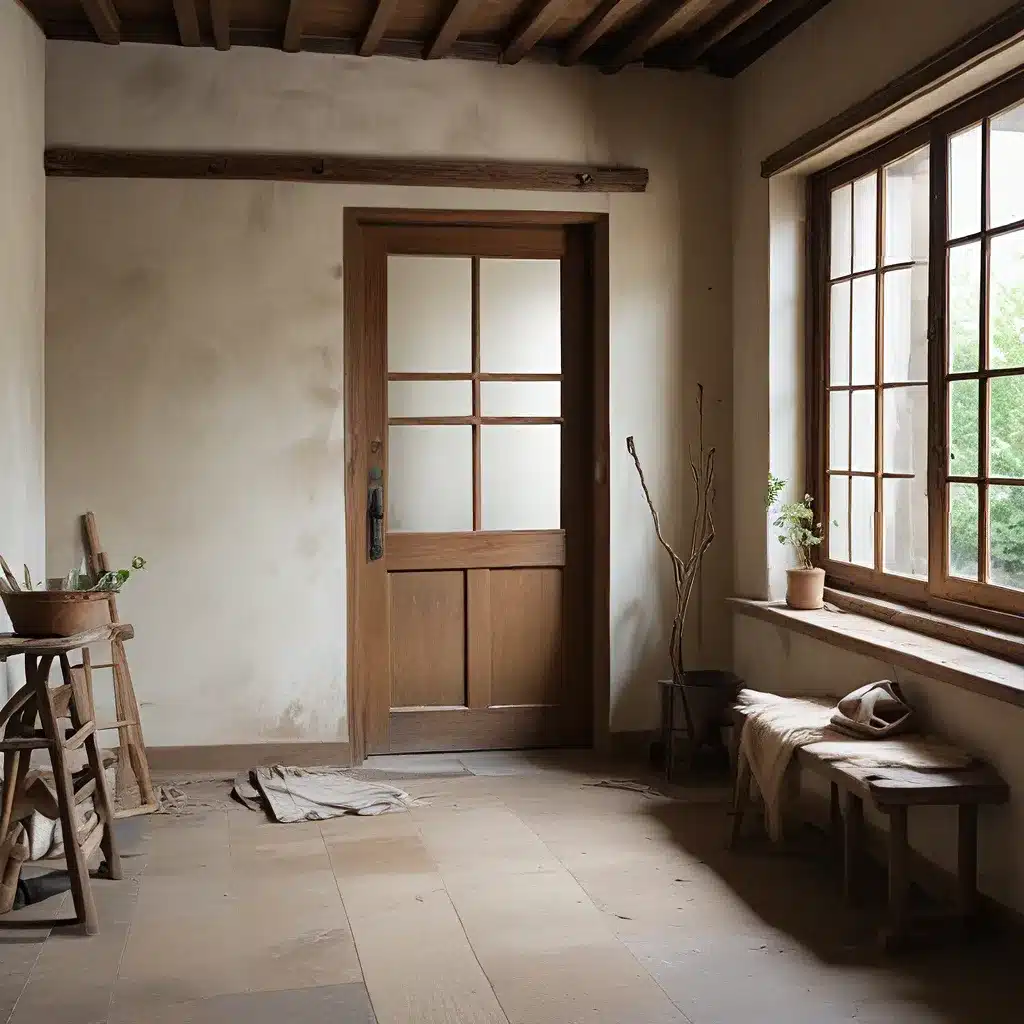Ah, the pursuit of perfection – something our society seems to be obsessed with, especially when it comes to the cleanliness of our homes. But what if I told you that there’s a Japanese philosophy that embraces the beauty in imperfection? That’s right, it’s called wabi-sabi, and it just might change the way you think about cleaning forever.
The Art of Imperfection
When I first stumbled upon the concept of wabi-sabi, I have to admit, I was a bit skeptical. “Accepting the natural cycle of growth, decay, and death?” I thought. “That’s not exactly the vibe I’m going for in my living room.” But the more I learned about it, the more I realized that wabi-sabi isn’t just a design aesthetic – it’s a way of life.
At its core, wabi-sabi is about finding the beauty in the imperfect, the impermanent, and the incomplete. It’s about embracing the natural flaws and irregularities that make our homes and lives uniquely ours. As one writer puts it, wabi-sabi is “a lens that appreciates the passing of time.”
The Beauty in Imperfection
Think about it – how often do we get caught up in the pursuit of a perfectly clean, organized, and pristine home? We scrub, we sanitize, we color-coordinate, all in the name of achieving some unattainable ideal. But what if we took a step back and embraced the natural wear and tear that comes with daily living?
That “rusty grate” that Kate, the homeowner featured in the source material, had hanging on her wall? That’s wabi-sabi in action. Instead of seeing it as an eyesore, she saw the beauty in its weathered, imperfect form – a testament to the passage of time and the natural cycles of life.
And what about those mismatched dining chairs, or the well-loved armchair by the woodstove? Rather than seeing them as flaws, the writer found them charming and inviting. They had a story to tell, and they added character and personality to the space.
Embracing the Unexpected
Wabi-sabi isn’t just about accepting the imperfections in our homes – it’s also about embracing the unexpected. As one design expert notes, it’s about “finding balance and peace in life’s eventualities” – the dirt that accumulates, the flowers that wither, the items that don’t quite fit into our carefully curated spaces.
In a world where we’re constantly bombarded with images of pristine, perfectly staged homes, it can be easy to forget that real life is messy. But that’s where the beauty of wabi-sabi comes in. By letting go of our need for control and instead embracing the natural flow of things, we can create spaces that feel truly alive and inviting.
The Wabi-Sabi Mindset
Of course, adopting a wabi-sabi mindset isn’t always easy. We’re so used to striving for perfection that it can be challenging to let go and embrace the imperfect. But as one writer eloquently puts it, “in living with simplicity and humility, we lead fuller, more authentic lives.”
And that’s the key – by letting go of our obsession with cleanliness and order, we open ourselves up to a more fulfilling, meaningful way of living. Instead of constantly worrying about the dust bunnies in the corner or the fingerprints on the windows, we can focus on the things that truly matter – the connections we make, the experiences we have, and the joy we find in the simple pleasures of daily life.
Adopting a Wabi-Sabi Cleaning Routine
So, how can you bring the principles of wabi-sabi into your cleaning routine? Here are a few ideas:
-
Embrace the Imperfect: Instead of striving for a “show-ready” home, focus on keeping surfaces clean and clutter-free, but don’t sweat the small stuff. A little dust or a few smudges on the windows aren’t going to ruin the vibe.
-
Rotate Your Treasures: Rather than keeping all of your beloved possessions on display at once, try the Japanese practice of rotating them through a special alcove or “tokonoma” on a seasonal basis. This not only keeps things feeling fresh, but it also allows you to focus on a few special items at a time.
-
Invest in Quality, Not Quantity: In the wabi-sabi mindset, it’s not about having the most stuff, but rather the most meaningful stuff. Invest in high-quality, well-made items that you’ll use and enjoy for years to come, rather than constantly replacing cheap, disposable goods.
-
Minimize Noise and Distraction: Our homes should be a refuge, a place where we can truly relax and recharge. By incorporating sound-absorbing materials and even using a white noise generator, you can create a peaceful, serene environment that allows you to “hear your inner voice,” as the source material suggests.
-
Appreciate the Journey: Remember, the goal of wabi-sabi isn’t to achieve some elusive state of perfection, but rather to find joy and fulfillment in the present moment. So embrace the process of cleaning and maintaining your home, and see it as an opportunity to connect with your space and your surroundings in a more mindful way.
The Power of Wabi-Sabi
At the end of the day, wabi-sabi isn’t just about cleaning – it’s about cultivating a deeper appreciation for the world around us. By embracing the imperfections and impermanence of our homes and our lives, we can find a sense of peace, harmony, and balance that can be truly transformative.
So the next time you’re tempted to reach for the bleach and the microfiber cloths, take a moment to pause and consider the wabi-sabi approach. You just might be surprised by the beauty and joy you discover in the process.
And who knows – maybe you’ll even find that a little dirt under your nails isn’t such a bad thing after all. After all, as Adam Cleaning knows, sometimes the best way to keep a home clean is to embrace the natural flow of life and all its messy, imperfect glory.







